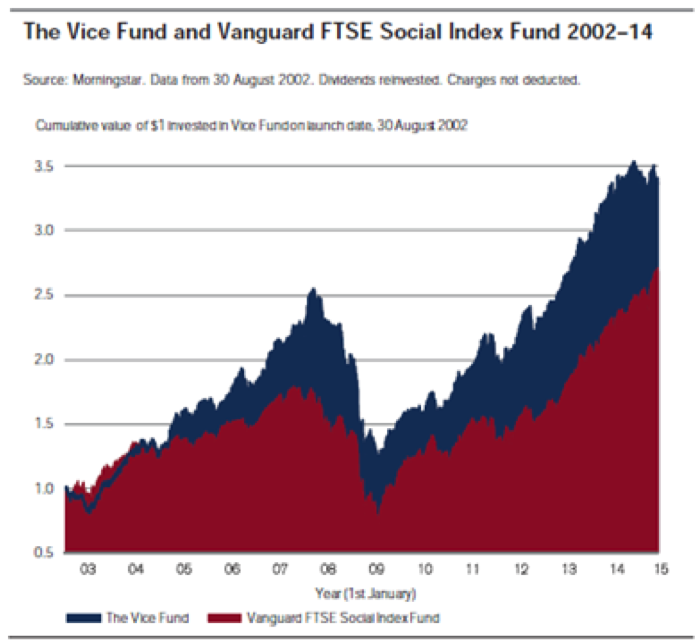How Marketing Has Failed Socially Responsible Investing
Post on: 16 Март, 2015 No Comment

About two months ago, Joel Makower made the claim that green marketing is over. Makower believes green marketing as we know it has failed us — the great consumer revolution simply hasn’t materialized, and sustainable products continue to limp along as niche players.
All this, despite growing evidence that these products are hitting the mark as far as price and quality are concerned. It’s perception that’s killing them.
Nowhere is this more true than in socially responsible investing (SRI). Look at index after index, and you see SRI funds that consistently outperform their non-responsible counterparts. It’s easy to understand why, if you consider companies incorporating sustainable and socially responsible practices are generally also innovative and forward-thinking in other areas — which tends to lead to better returns.
Cliff Feigenbaum, publisher of Green Money. believes that SRI is gaining wider market acceptance, but still remains niche. As he told me, it’s migrated from values-based personal investors to become part of much larger institutional portfolios, but only a minute part of these portfolios. It would appear institutional investors include SRI funds to tick off a box for trustees and shareholders.
So what can we as marketers do to change the perception of SRI funds to simply good, moneymaking funds? For answers, I turned to a number of great new studies.
Getting It Right Is The Exception
At last month’s Sustainable Brands conference. I had the opportunity to sit down with James Cerruti of Brandlogic. His company just released a new study tracking the actual versus perceived sustainability performance of 100 leading global companies. The study is the first to pull its perception scores from a narrow group of key stakeholders: investors, students, and supply chain partners.
Although some companies did put out a sustainability message consistent with their actions, the majority were either unacknowledged in their actions, laggards in both actions and words, or getting unfair credit for their less-than-stellar performance.
The study is a glaring indictment of the inconsistencies in sustainable corporate messaging being put out to key stakeholders like investors. We as marketers still have a way to go.
Start Marketing To The Majority
Another illuminating study was released at Sustainable Brands by OgilvyEarth. As Freya Williams, one of the study’s authors told me, green marketers are still busy preaching to the choir, or trying to convert the defiant unbelievers — while bypassing the huge (66 percent) majority of consumers who would be willing to give green a chance.
If you look at SRI marketing today, this isn’t immediately apparent. Values-based pitches have taken the back seat to performance, and windmills are slowly fading from the front pages of prospectuses. But we’re still pigeonholing SRI marketing, albeit more subtly. Among the violations Williams highlighted, there were at least five that SRI marketers regularly engage in. They include:
• It isn’t easy being green: Why are green investments still presented as a separate category? Why do we spend a disproportionate amount of time explaining their green credibility? Why can’t we simply put a seal of approval on them, to assure consumers they perform, and fit the ethical bill.
• Green is confusing: So what are they calling SRI anyway? In the last while, I’ve heard ethical funds, sustainable funds, responsible funds, and more. If we can’t agree on a name, heavens knows we won’t be able to convey a clear message. Personally, I like what Paul Herman has created: the Human Impact Profit index, or HIP. Definitely a better emotional message than responsible, and if you break down the acronym, easy to understand.
• Green is the new pink: I understand that appealing to female investors is lucrative. But by making a pitch aimed at feminine values, you isolate yourself from 70 percent of the population: men, and women who like cool men’s products vs girly women’s products.
• Green costs : Lead with the personal profit benefit, and you won’t go wrong. Balance the personal profit benefit with the values benefit, and you’ll introduce niggling doubt that your fund is a jack of all trades, and master of none, which translates into lower returns.
• Green is suspicious: Almost three-quarters of consumers prefer an environmentally-friendly cleaner from a big company whose name is synonymous with bleach, over an environmentally-friendly whose maker is totally sustainable. Why? Because we all want the reassurance of going with the tried and true. In SRI, that means pushing the reliability of the master brand, instead of trying to carve off a niche.
The above watch-outs give us a good idea of our ongoing missteps in marketing SRI.
Potentially the most valuable learning we can take away is that we need to distance ourselves from our pitch. Get outside the jar. We may believe that our marketing is squarely aimed at pitching performance, but a step back might reveal we’re still engaging in limiting behavior.
If you’ve been with your company for more than six months, chances are you’re inside the jar. In that case, get some fresh eyes from outside to look at your work. It’s well worth the green.
This article originally appeared on Fast Company. and is reprinted with permission.
Image CC-licensed by Tracy O .














